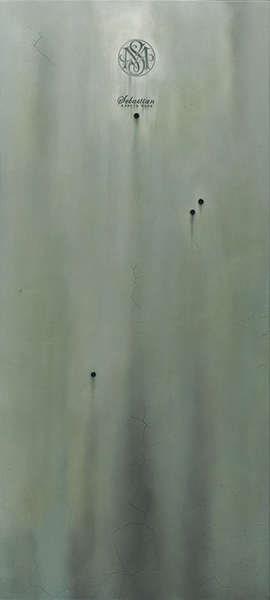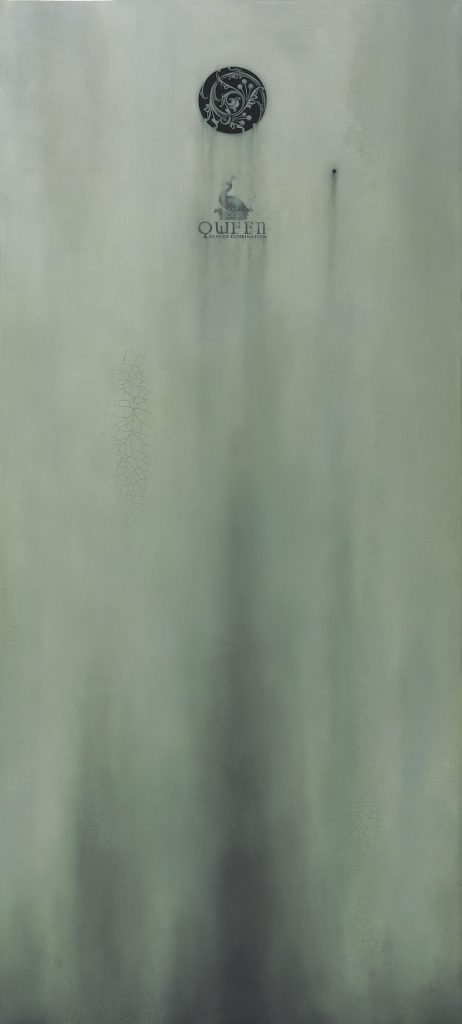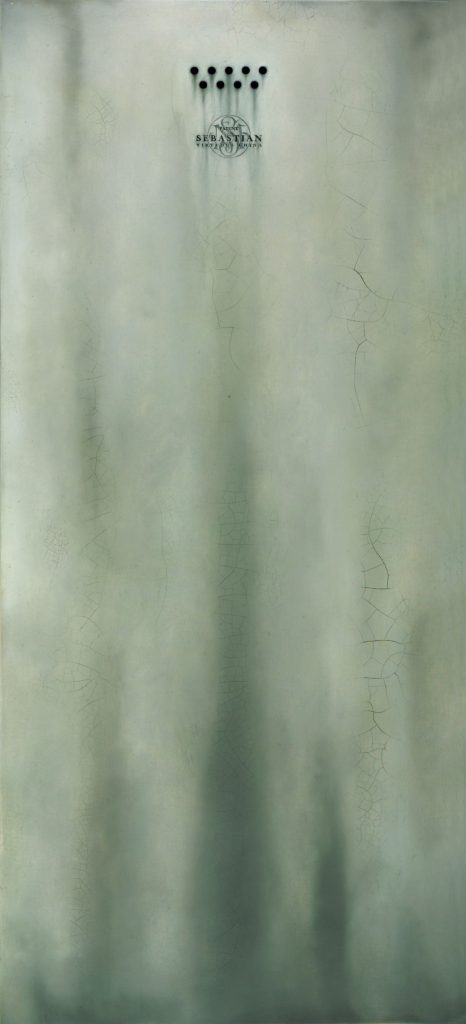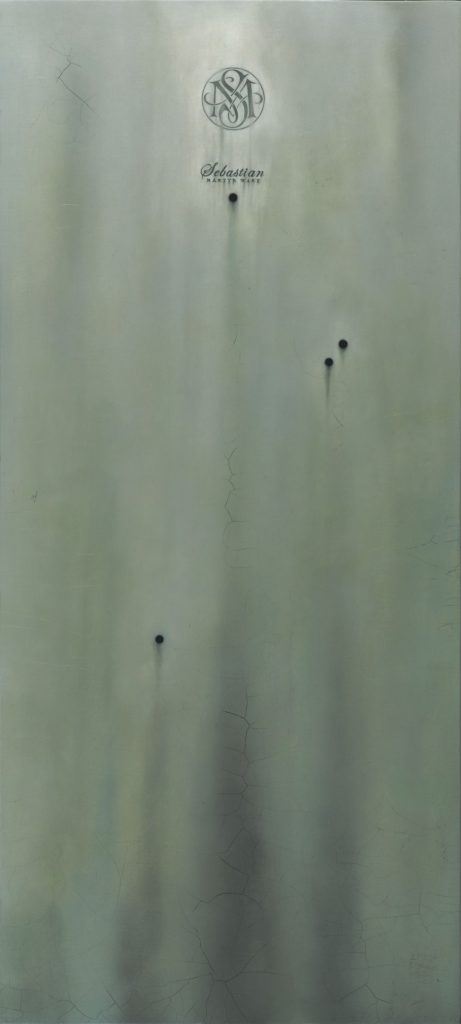“St. Anne’s Marble”
Wash me thoroughly from my iniquity and cleanse me from my sins.
Michael Nyman, Miserere, 1989.
“St. Anne’s Marble” was a term coined in Victorian England to describe the effect of ceramics used in the industrial manufacture of bathroom and toilet ware, particularly that coming from the potteries of Lambeth. It is a term highly suggestive of the original installation of banks of urinals, suites of water closets and rows of basins in private clubs and public institutions – hinting, as it does, at imagined lines of immaculate, glazed china surfaces. In its own historic context, it nullifies or sanitises the actual use of vitreous china in lavatory fittings. The declaration of purity and cleanliness refuses the immediate effects of bodily waste – abjection is hidden by the apprehension of a white, unstained surface.
While the origins of the term might in fact be much more prosaic, there is an interesting turn on the name: Anne, mother to the Blessed Virgin Mary. In order to maintain the sense that the Mother of God was untouched by Original Sin theologians required Mary’s own mother should also have conceived immaculately. Hence, in the late Middle Ages, Anne was herself made clean again and the necessary biology of human parentage was replaced with the theological declaration of the girl – child as a God-sent miracle to the aged mother and the faithful husband, Joachim.
To the extent that these paintings by Heather Straka echo Victorian bathroom fittings, in both their format and elements of their content, they bring immediate attention to the anachronism of a term such as St. Anne’s Marble. The white surface of the china cannot possibly sustain its purity over the interceding 100-150 years. Like the actual surfaces of century-plus old urinals, they present the wear, use and intervention of interaction with human bodies – inferring, as they do, not only the function of urinals but also of encounters before them, their scrubbing down, their use as a surface for graffiti and more intrusive assaults that leave them pitted and marked. Unlike the apocryphal Anne, there is little hope that the surfaces of the referents could ever again be restored to pristine condition.
There is clearly a contemporary sense of humour at work in these paintings – signalled most obviously by the device “By order of S. Mutt”. Like Duchamp’s Fountain, they bring the privy into the public arena and demand attention be paid to it. At the same time, the banal similarity of apparent subject matter also indicates how dissimilar the relative projects are. These paintings are highly finished works and the technical proficiency of their execution reflects the attentions lavished on them by the artist and invite similar levels of attentiveness by the viewer. Nor are these works crude lures. What trompe-l’oeil there is functions within a tightly circumvented field. One does not mistake these paintings for anything other than what they are; the cracked finish, the stained markings, the delicate trademarks may refer to objects outside but they are self-conscious devices that bring attention back to the worked surface. To this end, it would be ludicrous to expect them to invite an intervention such as that undertaken by Yuan Cai and Jian Jun Xi at Tate Modern in 2000 when the artists pissed on the case surrounding a facsimile Fountain. (I should add that I find it hilarious and remain incredulous at the fact that Tate officials claimed they could not be sure the intervention had actually taken place because no trace remained in the gallery.)
Moreover and despite the humour of the several devices at play in these paintings, there seems to be a more poetic aspect to Straka’s work. There is a degree of emotional resonance that is not easily dismissed and this turns on the way in which the overt aspects of content (urinal, trademark, stain) are complicated by the different inferences one may take from each and their inter-relation in a given painting. Regardless of how lightly this is made out in the paintings, there is a delicacy and poignancy to their affect. At the very least there is reference to the body and in this context such a reference inevitably calls up a sense of human fallibility, of a lack of containment. The deliberate nostalgia of the depicted devices and of the painting methodology coheres with the temporal references of the stains, the cracking and the faded graffiti tag as in the “Encoder Trademark” painting to suggest time’s passage.
What is interesting about such elements is that they sit both proximately and obliquely to religious metaphors of cleanliness, which is indicative of Straka’s adoption of irony in her work. Here, punning devices such as “Martyrware”, “Canonized China” or “Virtuous China” echo the manufacturers’ marks of English potteries printed at the head of fixtures such as urinals. With the decorative grilles and stonework quoted from religious ornament pattern-books the barb of Straka’s paintings seems to be made out – in English vernacular she is “taking the piss” out of religion, mocking it, ridiculing it, subjecting its piety to a most visceral intervention, not unlike Cai and Xi.
The Church, however, is an easy target and it seems to me that Straka’s point is less literal than it might seem. At first instance, her paintings do require consideration of the way in which codified religion makes the claim for making humans whole again, reintegrating us with the supposed intention of God, overcoming the effects of the Fall. Confession, penance, contrition have been presented for centuries as the mode of one’s realignment with God and goodness – purged of sin we are each of us made whole again and may come cleanly to God. Straka’s paintings would seem to point to the fundamental impossibility of such sublimation of human frailty.
More than this, she celebrates the dirtiness, perversity and abjection that are inferred by the paintings’ social reference points. The paintings’ refinement triggers one’s apprehension of her position in spite of or, perhaps, because of her manipulation of the normative presumptions of illusionistic rendering. It is a tactic that aligns her work with the tradition of painters succeeding Parrhasius (painter of the fooling veil in Pliny’s account) such as the seventeenth century painter to the Danish Court, Cornelius Gijsbrechts. Like those artists, there is a gentle mockery at work in these paintings signalled, perhaps, by the relationship between the painted object engaged with and its originating referents. Hence, an overly didactic mode of interpretation risks immediacy and mutability of response to the paintings, their beauty, their finish, their humour, their lightness. Indeed, each aspect of the paintings repeats the qualities of one’s being in the world and in so doing infers that the very idea of ever being made clean again (as if one ever was) is as futile as it is undesirable.
Purge me with hyssop, And I shall be clean,
Wash me, wash me, And I shall be whiter than snow.
Miserere
Peter Shand
Auckland, 2003
Public and Private 2000






